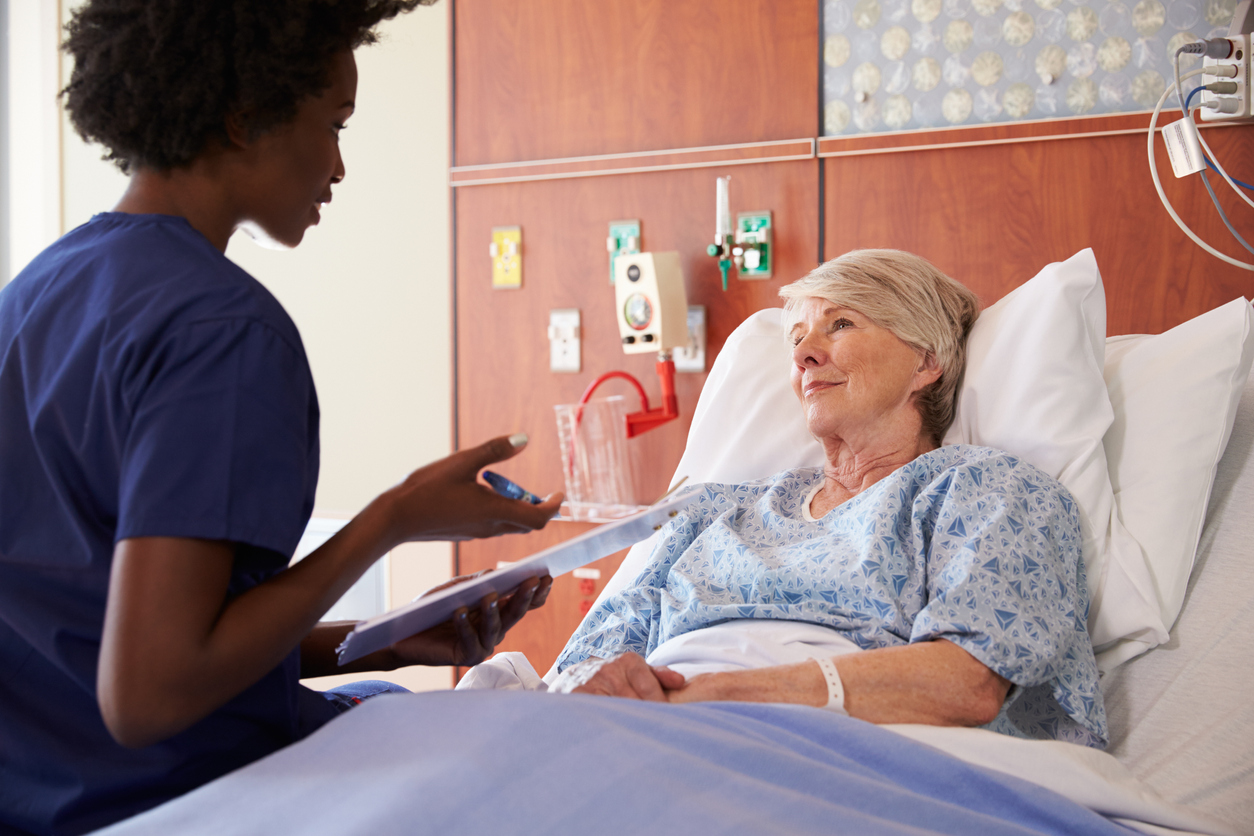
One of the challenges for nursing and healthcare education programs that want to use simulation scenarios is deciding whether or not to use standardized patients (also called standardized participants or simulated patients, and referred to here as SPs going forward).
Manikins can provide very basic feedback for some simulation scenarios. Learning how to take vital signs, perform CPR, and invasive procedures like placing an NG tube are best used with manikins. However, as healthcare professionals progress in their education, and move out of the classroom and into a simulation lab, more fidelity is required, and SPs can be sought.
Appropriate Scenarios
While a manikin can be programmed to present with certain vital signs, equipment is available so that SPs present with the vital signs the instructor wants in a scenario. Programmable stethoscopes, certain types of overlays, and other programmable equipment such as thermometers and blood pressure cuffs are available.
Scenarios where an SP is not only preferable, but vital for the fidelity of the simulation, are scenarios where communication is important.
- Communication and tone of voice
- Facial expression
- Movement
- Emotion
- Symptom portrayal
Having an SP, for example, who can raise one eyebrow, more accurately portrays weakness on one side for a CDA (stroke) scenario. A student experiencing differing hand-grasping strength will understand the symptom better than an instructor reporting, “Patient is weaker on the right side.”
If an SP needs a visual condition or injury, moulage can be used. With moulage, an instructor can show symptoms of rashes, infection, bruising or burns, and even self-harm injuries. Combining moulage with a patient who can emote is powerful and improves the realism of the scenario.
Recruiting SPs
- Who is available? Women are usually easier to find than men, and people who are retirement age are easily available. A difficult population to cast are men between the ages of 30 and 50.
- What is most important to the scenario? Do the SPs need to speak another language, or be an ethnic minority? Finding ethnic diversity for scenarios is much easier on the coasts than in the interior states.
- What is the scenario? Certain scenarios don’t need a specific population to portray, for example, fractures or other general injuries.
- Where do you find them? On-campus volunteers, if the campus is large enough; retirement centers or church groups; theater departments or community theaters; casting websites, and over social media. Other SPs can help recruit, too (especially if it's a paid gig).
- Do they have acting or improv experience? Using trained actors, whether from a campus program or community theater, enhances fidelity. Plus, they have experience memorizing scripts (which we will learn more about in part two of this series).
- Who don’t you want to use? Using faculty from the program can be too intimidating for students. Choosing to use former or current healthcare providers rather than actors is also tricky; they tend to lead the student. When giving feedback, an actor is much more likely to present a realistic patient perspective and be more honest.
- Are they reliable? Ideally, an SP will have access to reliable transportation, time to participate, and willingness to help students.
On a final note, recruiting SPs is easier when a program can offer to pay them. Many people we are talking about are happy to volunteer, but an offer of payment is a strong motivator. Through budget requests to the institution and grants from organizations, making a pool of money for SPs improves on program building.
This article is based on a presentation by Jan Barber, MSN, RN, the Operations Manager / Education Planner for the RISE Center at Robert Morris University. “Building a Standardized Patient Program,” was presented at the SimPOW meeting of November 16, 2018, at Pocket Nurse Corporate Headquarters. This is part one of a two-part article; part two can be read here. To learn more about standardized patients in healthcare education, see the site for the Association of Standardized Patient Educators (ASPEducators).






